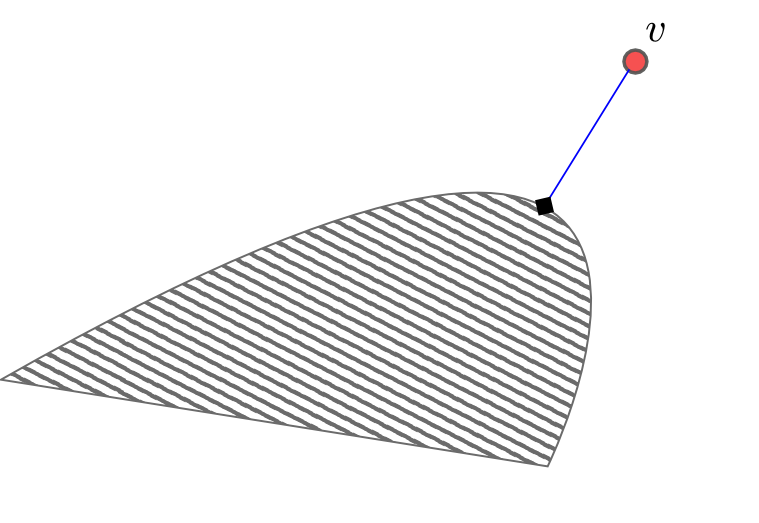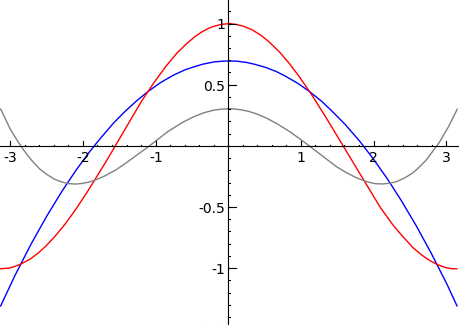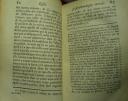I’ve profited from the AMS Publisher’s Sale to finally buy Dickson’s History of the Theory of Numbers and the Collected Works of Julia Robinson (for, respectively, 37$ instead of 146$ and 19$ compared with 61$, both are very good bargains), and I’ve started browsing randomly around both texts.
Looking in Volume I of Dickson work (which deals more particularly with “multiplicative” number theory and prime numbers in particular), I was happy to find a reference for the cute proof that there exist infinitely many prime numbers that follows from the combination of the following two facts:
(1) Euler’s identities (dating to around 1730)
$latex \prod_{p}{\frac{1}{1-p^{-2}}}=\sum_{n\geq 1}{\frac{1}{n^2}}=\frac{\pi^2}{6},$
(2) Legendre’s theorem: π2 is an irrational number (going back to around 1790).
I only heard this proof in 2005 (in a lecture by Iwaniec), and although I’ve asked a few people, no one seemed to know how far back this went. Dickson mentions an obscure survey of J. Braun in Wiss. Beilage Jahresbericht, Gymn. Trier, 1899, who
… attributes to Hacks a proof by means of Π(1-1/p2)-1=Σs-2=π2/6 …
(Chapter XVIII, page 414, of Volume I). Nothing is said here about who Hacks was, but he reappears on page 427 for a paper in Acta Mathematica of 1893, where he proved for instance that for a prime p, we have
$latex \sum_{y=1}^{p-1}\sum_{s=1}^{p-1}\left[\frac{ys}{p}\right]=((p-1)/2)^2(p-2),$
and moreover this is characteristic of primes. (He is also referenced in a few other places in Volume I for similar facts).
Of course, although somewhat pointless, this argument is “obvious” enough that is it possible (in fact, likely) that this was discovered independently many times. But at least, I’m happy to know that this was noticed a long time ago.
A few people have (also independently) wondered if this proof could be made quantitative. The idea is to use explicit measures of irrationality of ζ(2): for some constants C>0 and α, we have
$latex (*)\ \ \ \ \ \ \ \ \ \ \ \ |\zeta(2)-p/q|\geq Cq^{-\alpha}$
for all coprime integers p, q. Then we look at the numerators and denominators of the Euler product over primes < X, and compare the quality of the rational approximation obtained with what is permitted by (*) (the best known version of this holds with α=5.441243…, due to Rhin and Viola).
This is also clearly art for art sake, but amusing facts emerge. First, the known arguments leading to (*) use information about primes, typically of the same quality as the Chebychev bounds. Thus the argument is dangerously close to circular, because the consequences are typically weaker! However, Miller, Schiffman and Wieland have looked at the arguments of Rhin and Viola and played cleverly with it to obtain non-circular consequences about the distribution of primes. The second amusing fact is that it is in a sense much better to prove that there are infinitely many primes using the irrationality of
$latex \frac{1}{\zeta(2)}=\prod_{p}{(1-p^{-2})}=\prod_{p}{\frac{p^2-1}{p^2}},$
because the denominator is not as hard to control: this was the idea of J. Sondow (although he didn’t deduce any explicit consequence, it follows that using an irrationality measure one gets
$latex \pi(X)\gg \log\log X,$
which my own trial only produced by appealing to Linnk’s theorem on the size of the smallest prime in an arithmetic progression — a much deeper theorem than even Chebychev’s bound!)
As for Julia Robinson, I am not even an amateur logician, and I don’t understand her purely logical works, but she is renowned for works that mix logical ideas and number-theoretic results, and these may be appreciated without much logical background.
Her contributions to the solution of Hilbert’s 10th Problem are probably the best known, but not far from this is her remarkably beautiful characterization of the integers as a subset of the rationals in the language of first order theory of rings. In other words, what she found was a logical formula φ(x), with one free variable x, involving only addition, multiplication, 0, 1, and the logical connectors “and”, “or”, “not” and quantifiers “for all” and “there exists” (which are interpreted as ranging only over variables restricted to the rationals), such that, given a rational number x, the formula φ(x) is “true” (with the standard interpretation of the various logical constructs) if and only if x is in fact an integer.
This is not easy at all; in fact, here is the formula in her original work (part of her PhD thesis; there may, of course, be simpler versions known today):
$latex \forall a,b\ (\{\psi(a,b,0)\ \text{and}\ \forall m\ [\psi(a,b,m)\rightarrow \psi(a,b,m+1)]\}\rightarrow \psi(a,b,x))$
where ψ(a,b,n) is the formula
$latex \exists x,y,z\ (2+abn^2+bz^2=x^2+ay^2).$
Proving that it does what it is supposed to do involves some substantial number theory (namely, the Hasse principle for quadratic forms in three variables with rational coefficients), but is a beautiful elementary argument apart from that.


